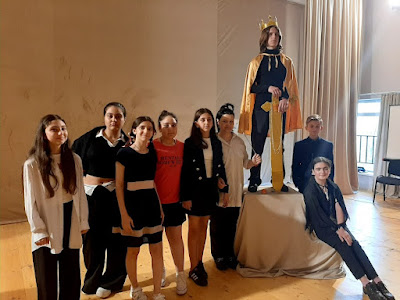Robert Burns
Robert Burns, or 'Rabbie Burns' as he was fondly called by the Scots, was a famous
Scottish poet. He was born on 25 January 1759, and died in July 1796, which meant he
was only 37 when he died.
He wrote some amazing poetry in the time he was alive, including Auld Lang
Syne which most of us sing on New Year's Eve. We say that he's the national poet of
Scotland because of his work, and we still celebrate him today on Burns Night on his
birthday every year.
1.Robert Burns was born on 25 January 1759 in the village of Alloway which is close
to Ayr in Scotland. His parents were called William Burnes and Agnes Brown, and they
were both from families of farmers.
2.He had three brothers and three sisters. He was the oldest of the siblings.
3.You can visit the cottage in Scotland that Robbie Burns was born in, which is now a
museum that teaches you all about his life as a child.
4.As a child, Robert Burns and his siblings worked very hard on his family farm instead
of going to school. They were taught by his father how to read and write, and his mother
taught him lots of Scottish poems and songs, which was the reason he wanted to be a
poet.
5.A friend of the family was also a tutor for Robert, so he learnt lots more than most
children who lived on farms.
6.During his teenage years, he wrote lots of romantic poems about girls that he was in
love with, and liked to write about the people around him. His first song was written for a
girl called Nellie Kilpatrick, and was called, "Handsome Nell."
7.When he was 26, Robert Burns' father died, and left the farming work to Robert and
his brother, but he was a rubbish farmer, and used his experiences to write his poetry.
8.He was nicknamed "The Ploughman Poet", because of his background in farming.
9.Robert Burns was a special poet because he wrote about big themes like love and the
universe in a way that was very simple and powerful with a small amount of words.
10.He wrote his poems mostly in the Scottish dialect, although sometimes he wrote in
English. This meant that both rich and poor people could enjoy his work, instead of just
upper class people like most poets wrote for.
11.His first book of poems was titled, Poems, Chiefly in the Scottish Dialect and was
released on July 31, 1786. It was very successful, and lots of different types of people
loved it, from simple country men and women to posh critics.
12.As well as writing poems, Robert Burns also wrote lots of songs. The most famous
song was Auld Lang Syne.
13.Most of Robert Burns' songs are written to the tune of old Scottish songs, and he
would often write three or four versions so he could choose which one best fitted the
melody.
14.He wrote over 100 songs for a book called Melodies of Scotland.
15.In the summer of 1788, after he'd had a lot of success in Edinburgh, Robert decided
to move to Ellisland in Dumfriesshire to live on a farm. For three years he did farm work,
but he found it very hard to do that as well as writing his poems.
16.Even though his poems were successful, Robert Burns still had to have a full-time
job as well, because they didn't earn him very much money. He got a job as an
exciseman (someone who collects taxes) to look after his family.
17.Robert fell in love with a lady called Mary Campbell who he wanted to move to
Jamaica with. This is one of the facts that people often don't know about Robert Burns.
Sadly Mary died suddenly, so they never made the move.
18.Robert Burns finally married a woman called Jean Armour in 1788, they had nine
children together including two sets of twins.
19.Even though he loved his wife very much, Robert Burns had lots of affairs, and it's
said that he might have had up to 18 children in total with four other women.
20.Scottish people celebrate Burns Night on Robert Burns' birthday to show that they
remember how great he was. The night has become a traditional Scottish celebration.
21.On Burns night it's traditional to eat a Burns Supper.
22.The Burns Supper consists of haggis, which is the national dish of Scotland. Haggis
is made up of sheep lungs, liver, heart and oatmeal which is boiled in a sheep's
stomach. These days lots of people choose a vegetarian version over the traditional
Scottish recipe.
23.The haggis is brought to the table to the sound of bagpipes and a poem that Robert
Burns wrote called, "Address to the Haggis."
24.On Burns night you also eat 'neeps and tatties,' which are potatoes and turnips, and
sing and perform poems.
25.Robert Burns died in July 1796 and was buried at the Burns Mausoleum in St
Michael’s Churchyard, Dumfries in Scotland, when he was 37 years old. The illness that
he had could have been treated easily today.





Comments
Post a Comment